The basic principle of weaving is that the weft threads cross the warp threads at right angles – but weavers are seldom satisfied to leave it at that! A deflected thread is one which has escaped the confines of the grid and shifted or curved into a new path. Incorporating weft deflections in your weaving is a simple way to bring texture and movement to your handwoven pieces. In this article, I will describe how to use a block threading to encourage waywardness in your weft!

Block weaves
On four shafts you can organise your threading into two blocks of plain weave, one using shafts 1 & 2 and the other using shafts 3 & 4.

In this diagram the blocks are 8 ends each, but they don’t need to be the same size.
You can weave ordinary plain weave on this threading by lifting shafts 1 & 3 together and then shafts 2 & 4 together, but to encourage your weft to move, simply weave one block at a time.
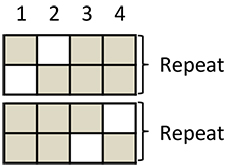
Using the liftplan shown here, you will raise one block out of the way while you weave the other. This will create warp floats on the face of the cloth and weft floats on the back. At the edges of the woven areas, the weft threads will drift a little into the unwoven areas and create a curved shape.
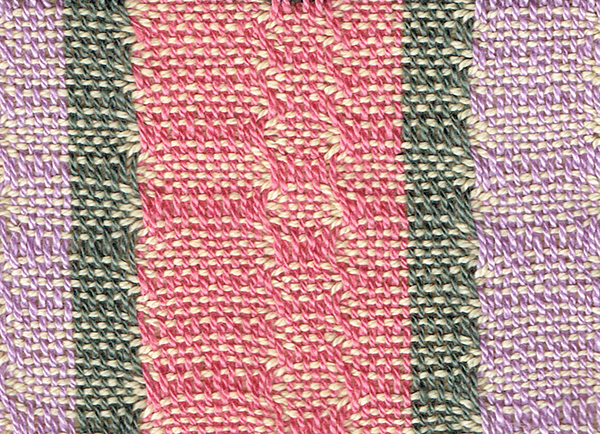
Adding an outline
You can emphasise the curves by adding an outline weft thread, which weaves plain weave across the whole width of your design, and you can increase the emphasis by making it much thicker than your main weft thread.
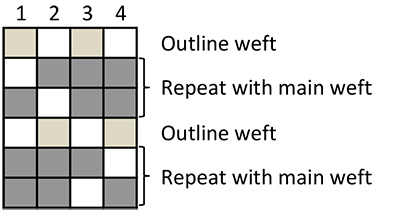
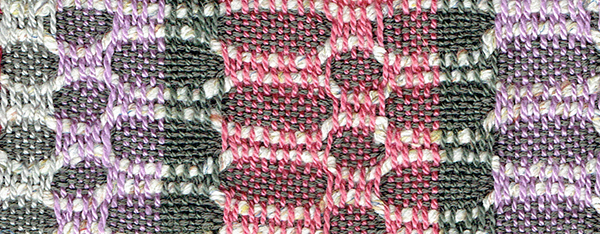
Note that to maintain plain weave order, I have adjusted the liftplan for the blocks: The first block now begins with shaft 2 raised.
Honeycomb
In some countries, this structure is known as honeycomb, but the description is most apt when the blocks are a regular size in both threading and treadling. With their thick outline weft, the plain weave blocks resemble the cells in a honeycomb.

Change of emphasis
So far we have considered relatively large woven blocks in a fine yarn with an outline thread introduced occasionally. An alternative approach is to weave large areas in plain weave with a thick thread and occasionally include small woven blocks in a finer yarn.
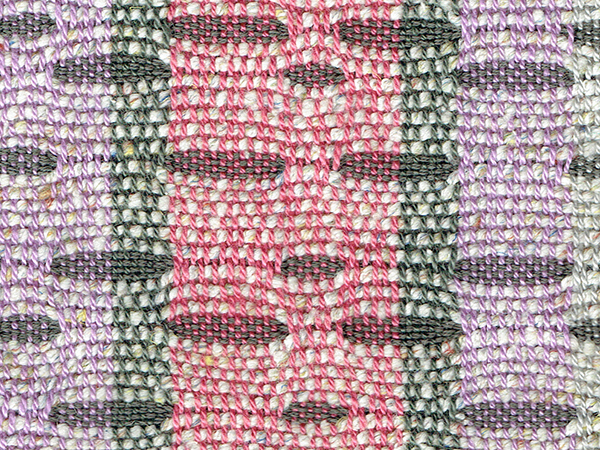
The lifts used are exactly the same as in the example above, but in this piece I have omitted many of the block repeats to obtain a completely different effect.
Discontinuous blocks
By this stage, you may have realized that you don’t need to weave your cells from selvedge to selvedge. You can selectively inlay areas of weft into some of your blocks — or disregard the blocks altogether and add areas of discontinuous weft anywhere you like! As a rather clumsy person, I find that using the block threading is useful even if I am not weaving all of the blocks at once. It allows me to pick out an area and handle the weft in that area very easily without having to push other warp threads aside.

As you can see, once you start down this path one thing rapidly leads to another!

Share tips, start a discussion or ask one of our experts or other students a question.
No Responses to “Add a Little Texture: Weaving With Weft Deflections”